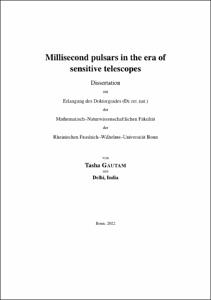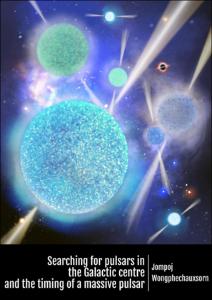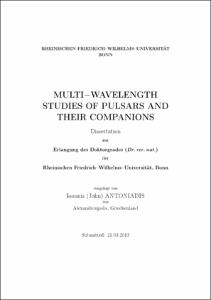Gautam, Tasha: Millisecond pulsars in the era of sensitive telescopes. - Bonn, 2023. - Dissertation, Rheinische Friedrich-Wilhelms-Universität Bonn.
Online-Ausgabe in bonndoc: https://nbn-resolving.org/urn:nbn:de:hbz:5-69124
Online-Ausgabe in bonndoc: https://nbn-resolving.org/urn:nbn:de:hbz:5-69124
@phdthesis{handle:20.500.11811/10572,
urn: https://nbn-resolving.org/urn:nbn:de:hbz:5-69124,
author = {{Tasha Gautam}},
title = {Millisecond pulsars in the era of sensitive telescopes},
school = {Rheinische Friedrich-Wilhelms-Universität Bonn},
year = 2023,
month = jan,
note = {Pulsars are highly magnetised rapidly rotating neutron stars that emit beams of electromagnetic radiation. Millisecond pulsars (MSPs) are a class of recycled pulsars that rotate with exceptionally small spin periods. They are extremely stable in their rotation which makes them exceptional probes to a plethora of multifaceted applications to science. These include understanding the nature of the pulsar binary, testing General Relativity, and constraining alternative gravity theories. In this thesis, I explore two crucial aspects of science with MSPs: a) discovering exotic MSP systems, and b) exploiting MSP binaries with long-term radio pulsar timing to constrain the nature of binary and explore their potential as gravitational laboratory. In this thesis, I present two pulsar search surveys carried out with upgraded GMRT and MeerKAT radio telescopes in Globular Clusters (GCs). I present the new pulsar discoveries in these surveys and discuss their timing solutions. In the survey with GMRT, we also looked for steep spectrum radio sources in the images of all the GCs observed. We found previously un-identified sources in these images that may likely be pulsars. In the search survey with MeerKAT, which is the first pulsar search survey performed with the MeerKAT radio telescope, we targeted nine GCs in the southern hemisphere. I will discuss how the discoveries in this survey corroborate the existing divide in the pulsar population of core-collapse and non core-collapse GCs. The second half of the thesis will focus on the timing analysis of two MSP binaries: PSR J1952+2630 and PSR J1012-4235. For both the systems, I present the long-term timing solutions and show for the first time the detection of relativistic effects in these systems. I present constraints on the masses of the pulsar and the companion obtained from these detections, and discuss the exciting future potential in testing GR and constraining alternative gravity theories in both the systems.},
url = {https://hdl.handle.net/20.500.11811/10572}
}
urn: https://nbn-resolving.org/urn:nbn:de:hbz:5-69124,
author = {{Tasha Gautam}},
title = {Millisecond pulsars in the era of sensitive telescopes},
school = {Rheinische Friedrich-Wilhelms-Universität Bonn},
year = 2023,
month = jan,
note = {Pulsars are highly magnetised rapidly rotating neutron stars that emit beams of electromagnetic radiation. Millisecond pulsars (MSPs) are a class of recycled pulsars that rotate with exceptionally small spin periods. They are extremely stable in their rotation which makes them exceptional probes to a plethora of multifaceted applications to science. These include understanding the nature of the pulsar binary, testing General Relativity, and constraining alternative gravity theories. In this thesis, I explore two crucial aspects of science with MSPs: a) discovering exotic MSP systems, and b) exploiting MSP binaries with long-term radio pulsar timing to constrain the nature of binary and explore their potential as gravitational laboratory. In this thesis, I present two pulsar search surveys carried out with upgraded GMRT and MeerKAT radio telescopes in Globular Clusters (GCs). I present the new pulsar discoveries in these surveys and discuss their timing solutions. In the survey with GMRT, we also looked for steep spectrum radio sources in the images of all the GCs observed. We found previously un-identified sources in these images that may likely be pulsars. In the search survey with MeerKAT, which is the first pulsar search survey performed with the MeerKAT radio telescope, we targeted nine GCs in the southern hemisphere. I will discuss how the discoveries in this survey corroborate the existing divide in the pulsar population of core-collapse and non core-collapse GCs. The second half of the thesis will focus on the timing analysis of two MSP binaries: PSR J1952+2630 and PSR J1012-4235. For both the systems, I present the long-term timing solutions and show for the first time the detection of relativistic effects in these systems. I present constraints on the masses of the pulsar and the companion obtained from these detections, and discuss the exciting future potential in testing GR and constraining alternative gravity theories in both the systems.},
url = {https://hdl.handle.net/20.500.11811/10572}
}









